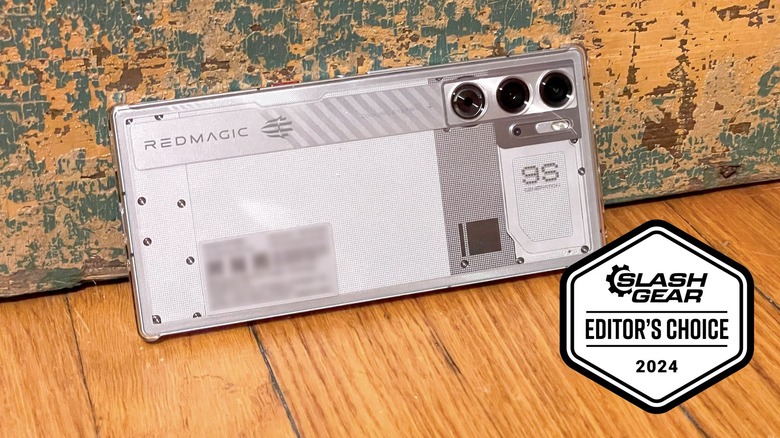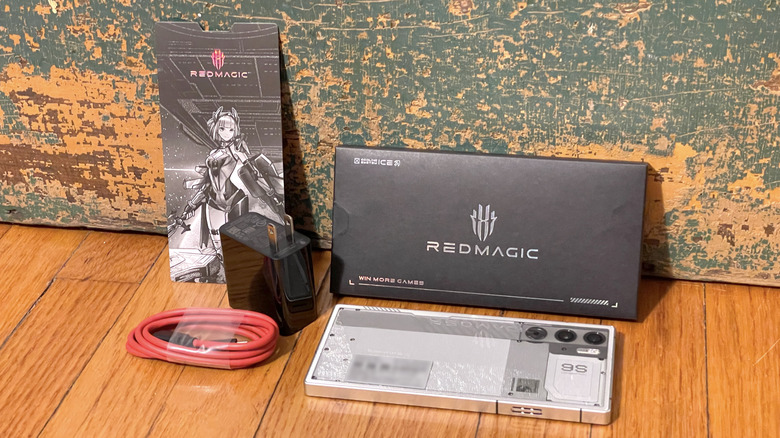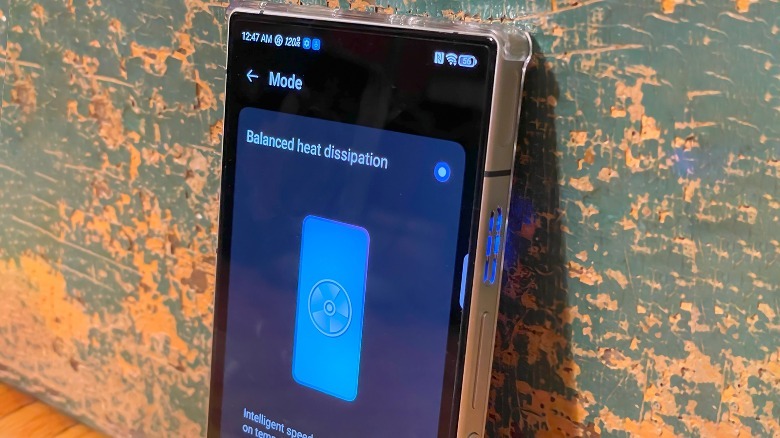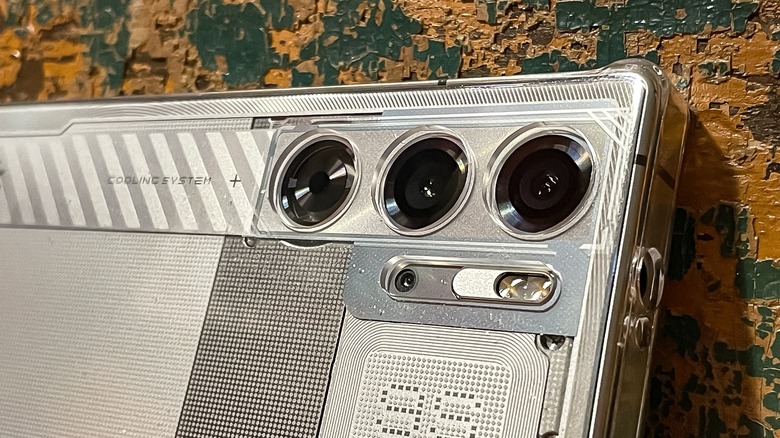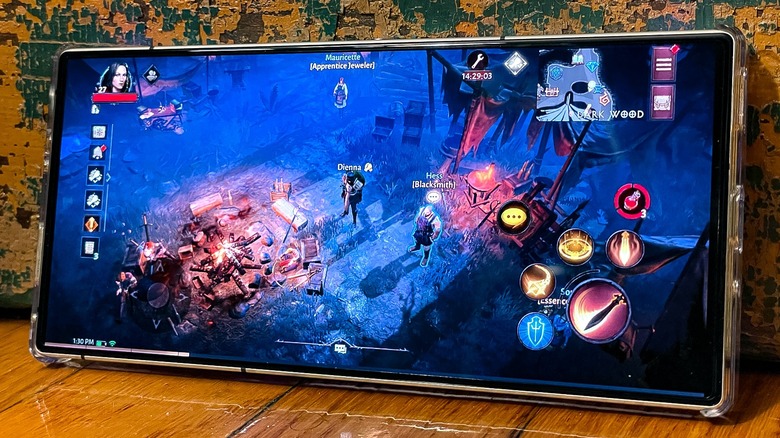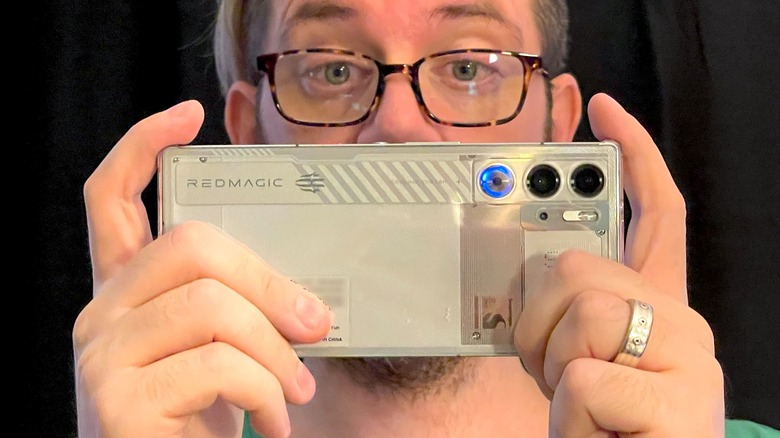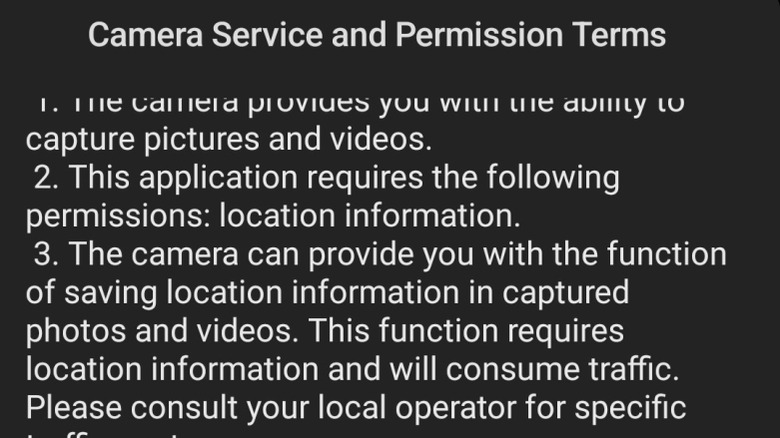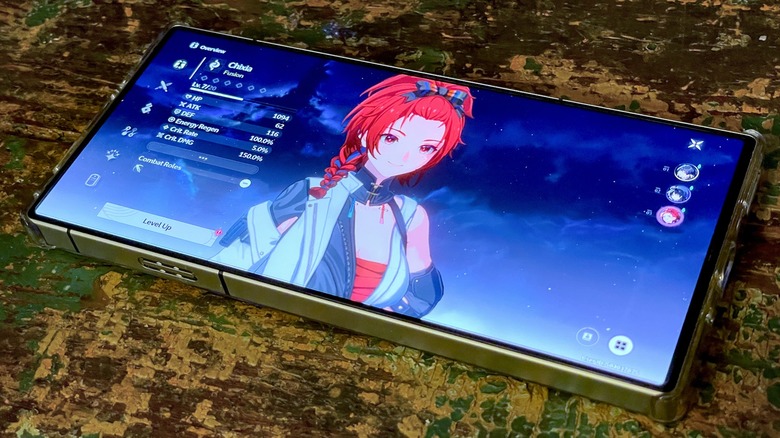RedMagic 9S Pro Review: A Mobile Gaming Sweet Spot For Power, Battery, And Price
- Impressive performance for high-powered games
- Equally impressive battery life and charging times
- Great looking and sizable screen
- Dedicated cooling fan helps dissipate heat
- Some default settings need attention
- Awkward button placement takes some adjustment
- Still gets warm at times, even with the fan
- Audio volume can be inconsistent
Gaming-focused versions of computers have been a constant for quite some time, so of course gaming-centric smartphones are also a thing. But do they need to be? Maybe "need" is a strong word since gaming isn't a vital life function, but entertainment is important and there are certainly reasons to get a gaming phone, specifically.
Thus we have this review of the RedMagic 9S Pro, looking somewhat akin to the kinds of very identifiable (and somewhat extra) gaming PCs out there and with the kind of slogan that's either hilariously satirical or awkwardly sincere. This is a Gaming Phone with intentional capitalization and it wants everyone to know it, even at a glance and even if they've never heard the name RedMagic before. Despite what it may look like on the surface, though, it's all about what's happening inside that distinct-looking frame. And what's going on under the hood is impressive enough to give the "Unleash the Warrior Within" tagline a pass. RedMagic provided a 512 GB RedMagic 9S Pro in Snowfall colors so that we might test the device for this review.
Box Contents
The box for RedMagic's 9S Pro is a bit more subtle than its marketing and reputation implies. Which isn't to say the packaging for a smartphone (which will almost certainly end up in a drawer, closet, or landfill somewhere) needs to be ostentatious, it's just kind of a surprise in this particular case.
What's less or a surprise is what's inside the somewhat nondescript box — aside from the obvious piece of hardware this review is about. A sturdy (though somewhat distractingly brightly colored) USB-C charging cable, an outlet plug to attach said cable to, a basic guide book going over buttons and ports, and a small tool for opening the SIM card slot.
There is one surprise, though: A clear plastic shell meant to go on the outside of the phone. It's no substitute for a properly durable smartphone case, but having any sort of protection included is definitely nice. It's also easy enough to remove or leave in the packaging, so if and when a suitably sturdy replacement comes along the swap will be easy. If nothing else, having a temporary added layer of protection (no matter how slight) out of the box is much appreciated.
OF NOTE: While this sort of simple protective accessory is relatively common in devices released internationally, if this device were released in the United States, such a simple gesture on the part of the manufacturer would be a welcome surprise indeed.
Sizes and Camera Power
As a smartphone, the RedMagic 9S Pro is no slouch. Even the $649.00 version rivals the $999 iPhone 15 Pro in terms of how much storage is included for the cost (256 GB versus 128 GB, respectively). And while the iPhone 15 Pro Max does start at a comparable 256 GB, it also costs $1199 (almost double the price). There's a lot more to the 9S Pro than storage space, though.
Both 9S Pro models utilize a Snapdragon 8 Gen. 3 processor, a 6500mAh battery supporting 80W fast charging, an internal cooling system with a fan that can be manually turned on (or set to automatic) at any point, a 120Hz 6.8-inch AMOLED display, two 50 MP rear-mounted cameras (main and ultra-wide-angle), a 16MP front camera, and dual 1115K speakers.
The screen is a nice size, provides a pleasantly vibrant and sharp picture, and hides the front camera and omits any kind of visible "notch" so it's both a smooth surface and smoother display from one end to the other. Of course all that bulk means it also has more heft to it than some other smartphones on the market (around 8.3-ounces on its own and 8.9 with the included plastic case), but it's not noticeably any heavier in a pocket than, say, an iPhone with a sturdy case on it.
Both of those 50 MP rear cameras are also quite effective at both low-light and closeup (macro) photography. It's difficult to say whether they eclipse other contemporary Android smartphone cameras, like what's found on the Moto G Stylus 5G, but they seem to be comparable at the very least — and are definitely an improvement over the cameras found in 2020s iPhone 12 Pro.
Above and below you'll see a set of photos captured with the back-facing camera array on the RedMagic 9S Pro.
Standard Gaming and Battery Life
Video games are the major selling (or at least marketing) point of the RedMagic 9S Pro, however, and the device certainly delivers on that front. There's a more than adequate amount of storage for a number of heavy duty mobile games or a metaphorical metric ton of smaller ones no matter which model of 9S Pro is being used, but the 512 GB version does provide what feels like an almost limitless amount of space for games.
Storage space isn't the only important factor though, and that Snapdragon 8 Gen. 3 does its job admirably — especially when paired with the 16 GB of RAM inside the 512 GB model provided for this review. Factor in the cooling fan system, plus an impressive amount of battery life, and the 9S Pro ends up being quite the pocket-sized gaming platform. Testing out graphically intense games like "Wuthering Waves," "Genshin Impact," and "Zenless Zone Zero" (on max settings when available) resulted in no noticeable dips in hardware performance. And said games all ran solidly, with the cooling fan on, for hours at a stretch with no problems whatsoever.
But what is heavy-duty mobile gaming without robust battery life? The good news here is that this device's battery optimization might be even more impressive than the processing power. After an entire evening (and then some) spent bouncing between games for roughly right to 10 hours — again, with the cooling fan on to boot — wasn't enough to bring the power levels low enough to necessitate a charge. It eventually got there, of course, but it took much longer than anticipated. After which the charging itself was fairly quick, going from under 20% back up to 100% in roughly 30 to 45 minutes.
Modified and Boosted Gaming and Battery Life
Games are such a big part of the RedMagic 9S Pro's identity that they extend beyond simply having an impressive battery and powerful processor (and a lot of RAM, and a nice screen, etc). The phone is literally built around the idea with a pair of physical "shoulder triggers" (illuminated buttons along the top of the phone when held in a horizontal orientation) and a dedicated switch for Game Boost Mode.
Now the 9S Pro handles high performance like a champ regardless, but that's before switching on Game Boost. Enhanced color, three performance modes (Eco, Balance, or Rise for better battery life, balanced performance, or the highest performance), and High Quality GPU settings can all be used to push things even further. These settings are applied to individual games, too, so if something doesn't seem to benefit from or need the excess power, it can continue running on the default settings instead.
All that boosted performance and screen enhancement and whatnot does pull more juice from the battery, though. Even so, while testing with the highest Game Boost Mode settings turned on did result in the battery draining faster, it still hung on for an admirable amount of time. Around four to five hours or so of non-stop gaming with everything cranked up as high as possible, at a rough estimate. Honestly? That's still pretty dang good.
A few oddities
There were a few hiccups along the way when putting the RedMagic 9S Pro through its paces, however. Nothing related to game performance or anything like that, though the phone does still get warm (not hot, just warm) at times even when the fan is running, but there are a few more notable missteps — some of which might be fixed in the future via updates, hopefully.
First and foremost, the physical buttons. Having dedicated space for shoulder buttons is clever for a smartphone intended primarily for games, but they require the phone to be tilted horizontally in one very specific way (apologies to those who prefer to tilt the phone towards the left rather than the right) and they end up shifting the volume and power buttons further down as well. Shoulder buttons make for a whole different sort of phone — don't be shocked if you pick one of these up and find yourself needing extra time to acclimate. Also not all Android games support those shoulder buttons, which might make their inclusion feel like more of a burden than a boon depending on what's being played most often.
Then there are the other oddities. A handful of spelling and grammatical errors in the operating system menus aren't necessarily a huge deal, but they don't exactly inspire confidence, either. The volume is also oddly spotty in that it does come through clearly and sound good but the jump between settings can be a bit too dramatic. This device would benefit greatly from more granular levels for volume.
Permissions Language and Default Watermarks
Okay, so, first of all it bears explaining that most (perhaps all) of these defaults aren't a new thing for smartphones. Particularly Android smartphones. However, if someone isn't used to these kinds of settings or is coming from a platform that's a little less... blatant... they can be a bit of a shock. Not exactly inexcusable (though individual tolerances for this kind of thing will make a difference), but they do feel a little intrusive at the very least.
The built-in camera app asks for (implies that it requires, more like) location permissions, which can be denied but will result in it automatically closing. It's possible to adjust the location permissions in the Settings and still use the camera app, but the average first-time user may not know this or care enough to spend the time setting it up. Again, location data for camera apps isn't exactly a new idea, but making it appear as though it's a requirement doesn't feel particularly great.
Similarly, photos and screenshots are likely to end up with an unintended RedMagic watermark on them by default, which also doesn't sit well. Like with the camera app, this can be changed in the Settings. But unlike the app, the watermark settings aren't overt when the app is opened. The only way to know they're there is to either already know they're there, or take a photo and wonder what the heck happened before doing some investigative menu spelunking.
Verdict VS Gaming Competition
Figuring out where to land on the 9S Pro's verdict has been tricky. It's undeniable smartphone does an impressive job with handling resource-heavy games, even on their highest settings — exactly as advertised.
Sure the 9S Pro does get warm, but the internal fan (which you can manually toggle) keeps it from getting too warm. And even when things do heat up the performance isn't affected. On top of which is a battery that, at least out of the box, may just rival (or even exceed) modern dedicated handheld gaming devices.
The thing that makes a whole-hearted recommendation difficult is pulling back to consider not just the 9S Pro and its price starting at around $650 (for the 12GB RAM/256GB data storage version, or $800 for the 16GB/512GB version we reviewed above). If you're looking at that price and comparing to other handheld gaming systems on the market today (not just Android), you might think twice. That same $650 could be used to get a 1 TB OLED Steam Deck instead – or for $300 less, you could pick up a whole OLED Nintendo Switch.
Is that a fair comparison to make? Maybe not. When compared to other gaming phones – like the ASUS ROG Phone 8 Pro (for $1000 or more), for example – the 9S Pro is much more competitively priced. You are, after all, paying for a whole smartphone here, too. So while it might be a tough sell for someone who just wants to be able to play games on the go, it's right in the sweet spot — powerful enough to run your favorite games with aplomb, but not nearly as expensive as a more-power-than-you-need Samsung Galaxy S23 Ultra (for approximately $1200).
